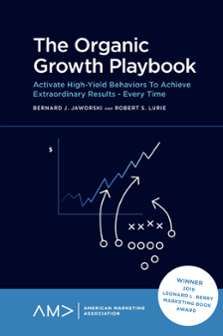
Index
ISBN: 978-1-83982-687-0, eISBN: 978-1-83982-684-9
Publication date: 3 August 2020
Citation
Jaworski, B.J. and Lurie, R.S. (2020), "Index", The Organic Growth Playbook: Activate High-Yield Behaviors to Achieve Extraordinary Results – Every Time (American Marketing Association), Emerald Publishing Limited, Leeds, pp. 279-284. https://doi.org/10.1108/978-1-83982-684-920201017
Publisher
:Emerald Publishing Limited
Copyright © 2020 Bernard J. Jaworski & Robert S. Lurie
INDEX
Note: Page numbers followed by “n” indicate end notes.
- Prelims
- 1: Overview of the Organic Growth Playbook
- 2: Terrafix: Reigniting Blockbuster Growth in Pharmaceuticals
- 3: First Principle: Map the Buying Process Waterfall
- 4: EnServ: “Everyone Sees the Market the Same Way”
- 5: Second Principle: Use Propensity-Based Segmentation
- 6: Sparkle Cosmetics: Winning at the Wall
- 7: Third Principle: Unearth the Critical Drivers and Barriers of Target Behaviors
- 8: Caesar Financial: “We Need the Whole Client Portfolio!”
- 9: Fourth Principle: Develop a Behavior Change Value Proposition
- 10: Fifth Principle: Invest Disproportionately
- Implementing the Playbook
- 11: Applying the Playbook in Different Markets
- 12: Overcoming Organizational Roadblocks
- Notes
- References
- Index
- Acknowledgments
- About the Authors